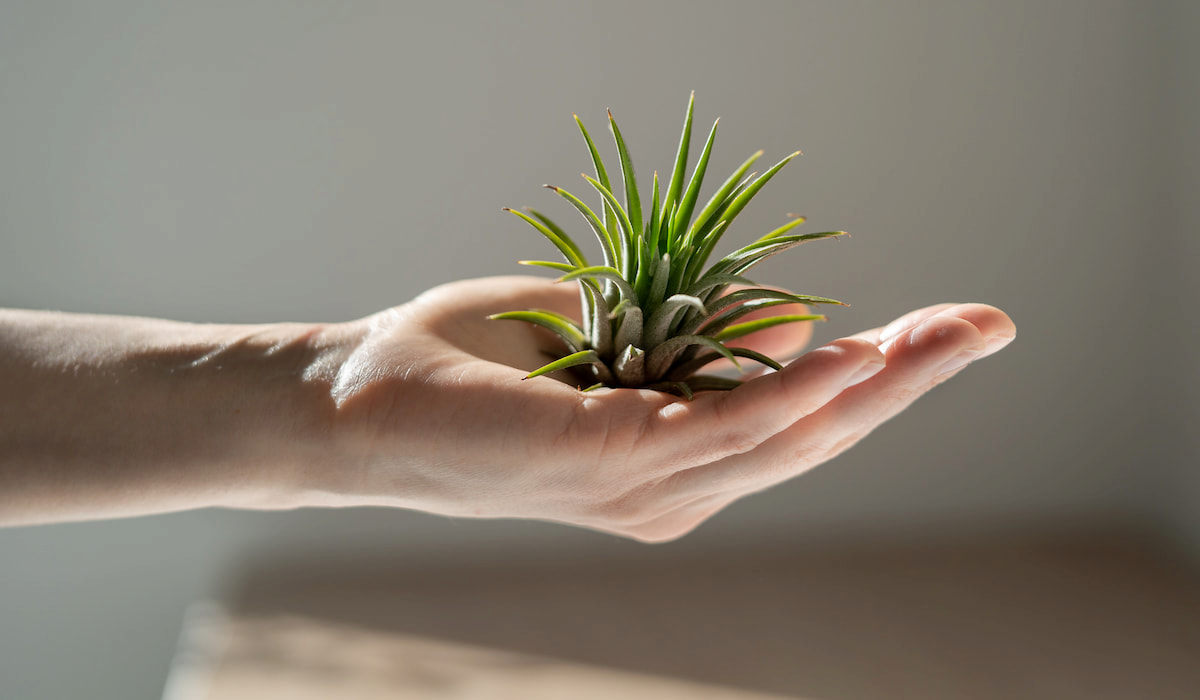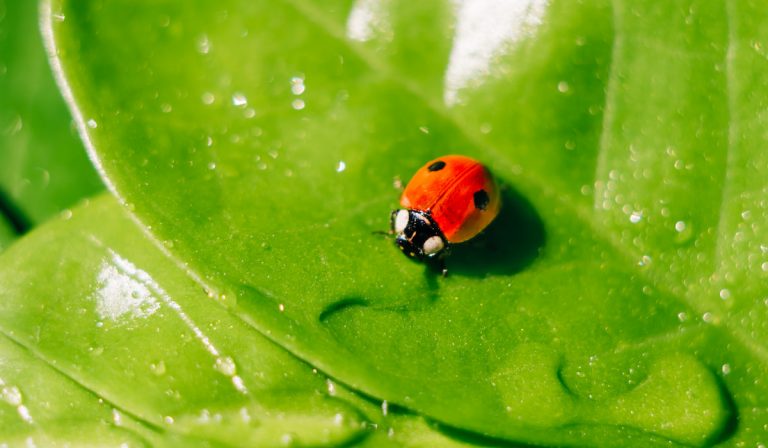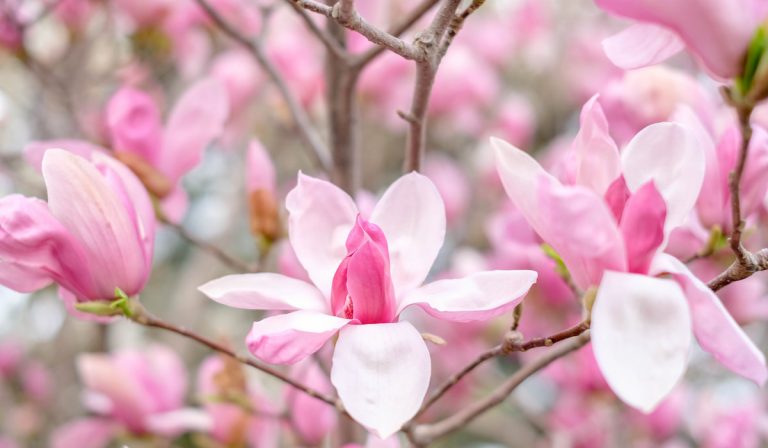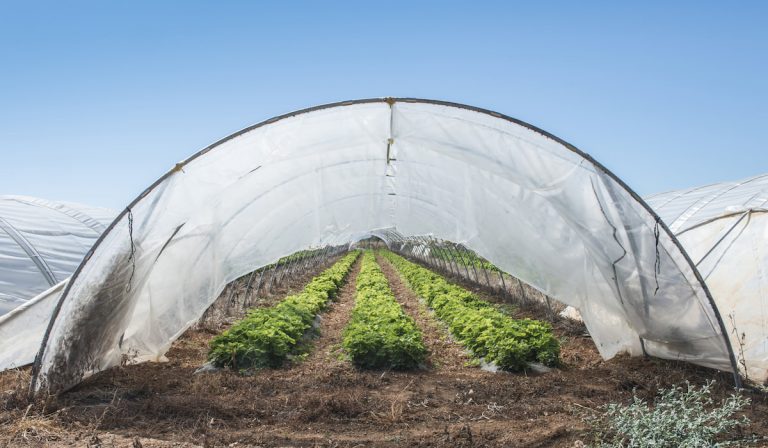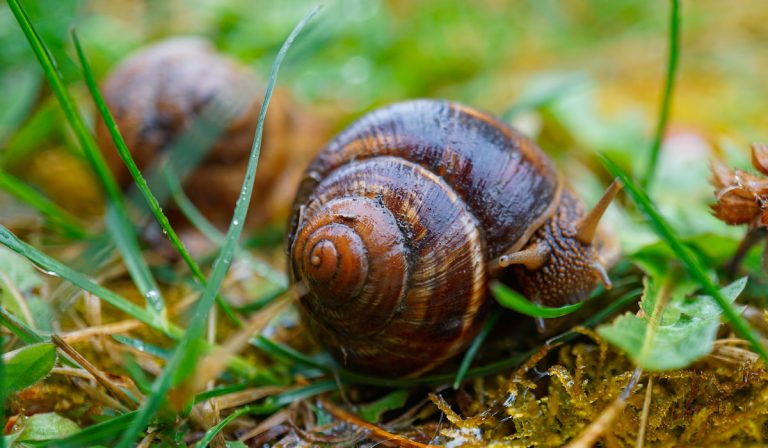11 Tips for Growing Air Plants
If you have not had a lot of success with houseplants or require something new, maybe it’s time to try an air plant. Air plants are ideal for small spaces and crafting projects. Plus, they require minimal care and do not need soil to grow.
You can use air plants to decorate wire baskets and glass baubles or driftwood crevices and shells. You can also choose to place your air plants among other houseplants.
Air plants are perfect companions for bromeliads orchids and cactus, and in this article, we discuss 11 tips for growing them.
Table of Contents
Choosing a Container
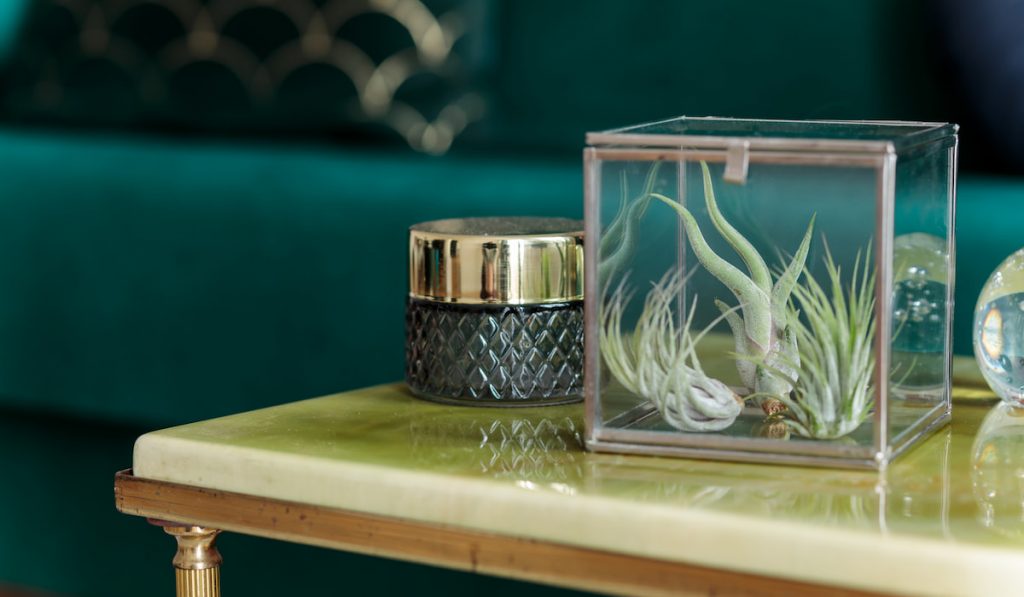
The first step for those looking to grow air plants is picking the ideal container for it. You have a variety of choices including wooden bowls, baskets, or glass terrariums. You can always find something to reflect your style.
If you go with a terrarium container, do not get one that is fully enclosed. Get a terrarium container that will ensure your plant gets enough air circulation.
Try to avoid placing your air plants in any container made from copper due to the toxicity of this mineral to air plants.
If you decide to go for containers made from wood, avoid anything that has been pressure treated. The chemicals used for treating the wood contain copper, which is toxic to air plants.
Avoid putting your air plants in soil. Air plants require only sunlight, air, and water. Planting them in soil can cause root rot.
Mounting
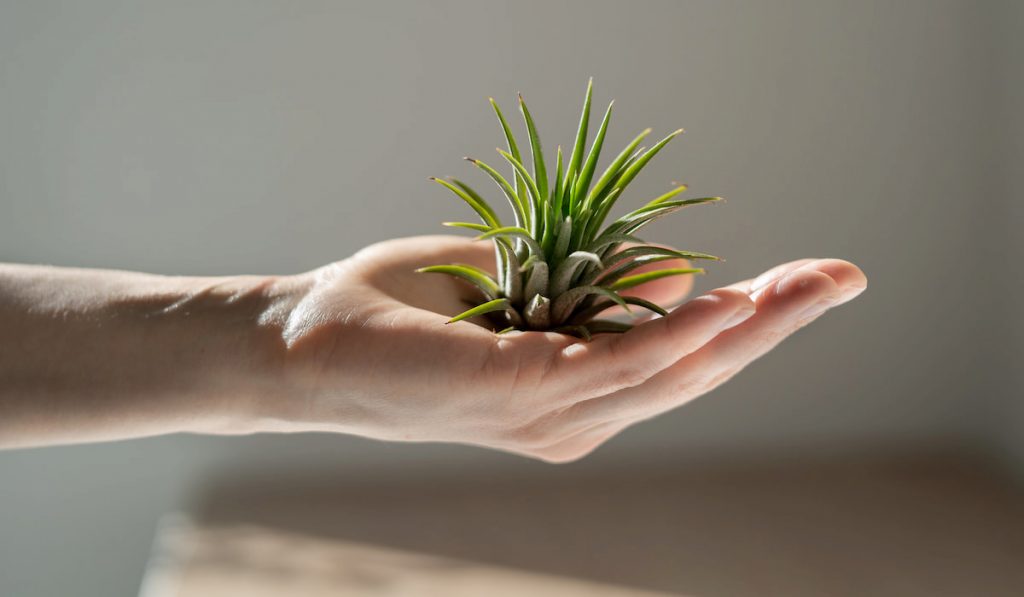
Since air plants are versatile, it is possible to grow them almost anywhere. You can successfully mount your air plants on rocks, untreated wood, coral, and pottery, or in a seashell.
To mount your air plants, staples, wire, nails, twisty ties, fishing lines, or hot glue work fine. But when you mount your plants, do not staple the fleshy part of the plants or you will risk killing it. Also, avoid using copper wire or superglue when you mount because they can kill the plant.
When you mount your air plant, avoid surrounding it with moss. Moss can hold a lot of water, and this can lead to rotting and eventual death.
Light Requirements
For air plants to remain healthy, they require a few hours of bright and filtered sunlight every day.
Place your air plants within 1-3 feet of a west or east-facing window. If you reside in an area with high humidity, your air plant will tolerate more sunlight since it will not dry out readily.
If your air plants are well watered, they can also tolerate hotter and more direct sunlight exposure.
For outdoor air plant varieties, they will do well with full sunlight. But if you place them in a conservatory, sunroom, or unshaded greenhouse, you risk burning the plant.
You can also grow air plants using artificial light, preferably full-spectrum artificial light.
Your air plant should not be more than 3 feet away from the light source. With a full spectrum light source, air plants require at least 12 hours of exposure. Ensure you set a timer when using this light source.
Temperature Requirements
Air plants are generally native to tropical climates where they never experience freezing weather conditions.
Air plants will thrive within the temperature range of 50–90° F. However, your air plants can still tolerate temperatures outside the given temperature span.
Also, avoid placing your air plants close to air conditioners and heaters. Air plants are pretty sensitive to cold air, and hanging them close to heaters will cause the plants to dry out.
Watering
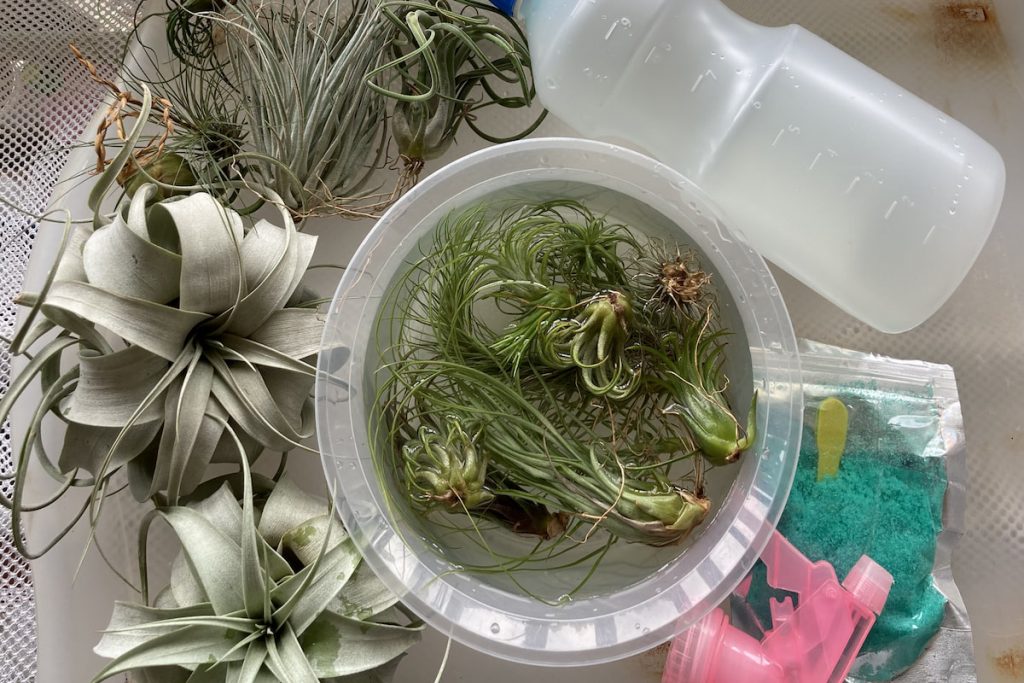
Unlike most plants, air plants do not have extensive roots.
The few short roots air plants have allow them to hold onto any surface you place them on. The amount of water your air plant will need depends on the conditions of your home.
When you grow them in hotter and drier environments, your air plants will require water more often. But in colder and more humid conditions, they will require less watering.
Air plants require watering about once a week, although some varieties can go without water for two weeks. Monitor your air plant so you can determine when it needs watering.
To water your air plant fill up your sink with enough water and submerge your plant. Leave the plant to soak for at least 30 minutes.
After soaking, shake it gently to dislodge any excess water before turning it upside down and leave it on a towel to drain.
Your air plants may also require misting regularly, especially during winter when the humidity in most homes is lower.
Water Quality
The type of water you use when you water your air plant is essential.
Avoid using softened water because of its high salt content, which can damage your air plant. Avoid distilled water as well, since this water is too pure and will not provide any nutrients for your plant.
You can use filtered water, bottled water, or tap water to water your air plant. You can also use pond water or aquarium water that is not overcrowded with reptiles or fish.
Air Dry After Watering
After giving your air plant a good soaking, you need to ensure it dries out fully. To enable your air plant to dry, gently shake it to remove any excess water. Next, place your air plant in a bright and well-ventilated area and leave it to dry.
If you do not let it dry well enough, the plant will begin to rot. But if your air plant dries within a short time, it means your air plant is not hydrating.
Avoid Overwatering
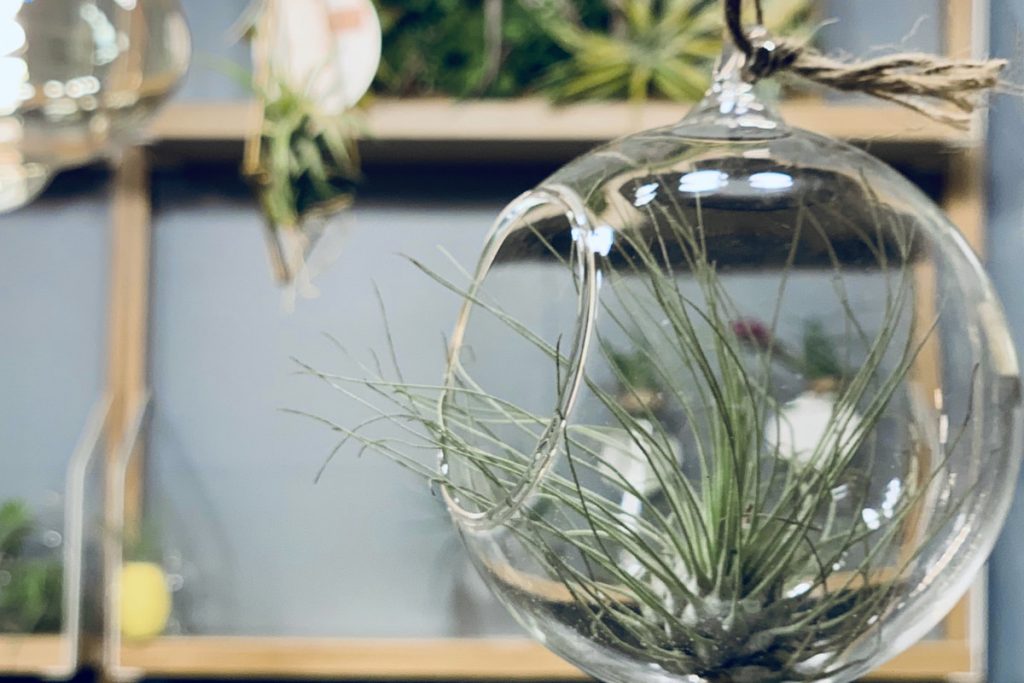
Overwatering your air plants will often result in root rot.
Root rot can also occur if you soak it for too long. When root rot occurs, your air plants will have blackened roots or will become mushy. The middle leaves of the plant will also turn yellow and begin to fall out.
To avoid root rot, it helps if you have a watering schedule for your air plants. When you notice your air plant has root rot, remove the affected areas with scissors or grooming shears.
After removing the affected areas, place the air plant upside down in a well-ventilated area.
Fertilizing Your Air Plant
Applying fertilizer to your air plant is not essential, but it is also not a difficult task. Fertilizing your air plant can occur once or twice a month. You can use the dunking or misting method to apply fertilizer.
If your air plant is dry, you may need to soak it before applying the fertilizer.
Your air plants will stay healthy even without fertilizer, particularly when you use rainwater or water from the pond to water.
You can use a bromeliad fertilizer, tillandsia fertilizer, or water-soluble orchid fertilizer. Fertilizing air plants ensures that they will continue to reproduce and blossom.
Watch Out for Pests
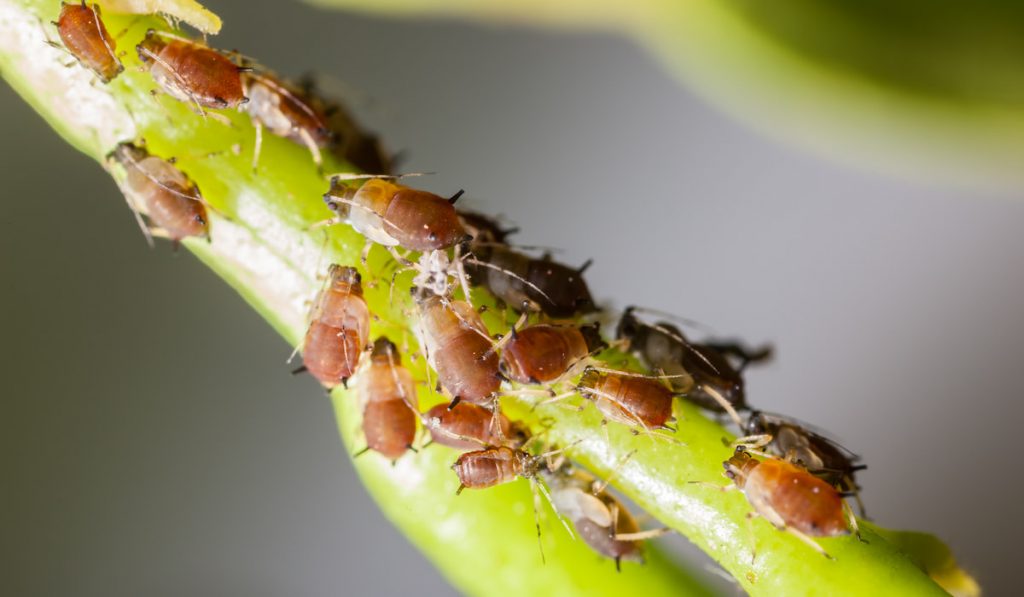
When you grow air plants, there are two pests you need to watch out for: mealybugs and scale insects.
Mealybugs are small white or light brown bugs that feed on air plants. If you notice the leaves of your air plant turning yellow or falling off, check for a mealybug infestation.
Scale insects tend to attach themselves to the base of the leaves while they feed on the plants. If you notice scale-like bumps on the leaves of your air plant, there is the possibility of a scale infestation.
If you notice any form of infestation, the first thing you must do is quarantine your plant. Placing your plant in quarantine will reduce any risk of the infestation spreading to your healthy plants.
Ensure you consult a gardening expert to determine the cause of the infestation and the treatment your plant requires.
Grooming Your Air Plant
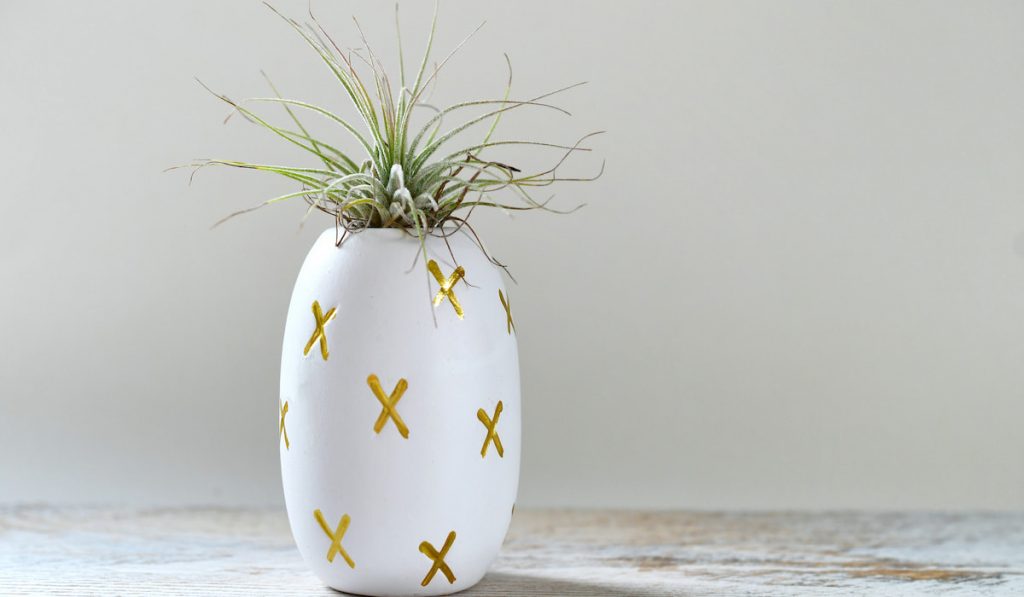
The life cycle of an air plant consists of one plant reaching maturity and blooming. Before, during, and after your air plant blooms, it produces pups, with some plants producing about 2-8 offshoots. Each plant will produce flowers once in its lifetime.
Depending on your air plant species, the flowers can last for a few days or many months. Once your air plant blossoms, it produces offspring, also known as pups.
When you want to remove pups, ensure that they are at least one third or half the size of the mother plant.
To remove pups, hold both the pup and mother plant at the base and twist gently. If twisting doesn’t work, you can remove pups by cutting them off.
If the mother air plant is still alive, do not discard her since she can still produce offshoots until she eventually dies.
Resources:
- https://www.gardeners.com/how-to/air-plants/8915.html
- https://www.bhg.com/gardening/houseplants/care/grow-air-plants/
- https://www.sunset.com/garden/keep-your-air-plant-alive-with-these-6-simple-tricks-tillandsia
- https://omysa.com/blogs/planting-101/air-plant-care-8-simple-tips-on-how-to-grow-and-care-for-air-plants
- https://modernfarmer.com/2021/03/how-to-take-care-of-your-air-plants/
- https://www.proflowers.com/blog/air-plant-care
- https://www.proflowers.com/blog/air-plant-care

